Ali Emre Pusane
LDPC-Coded Molecular Communications with Increased Diversity
Dec 04, 2024



Abstract:This paper suggests achieving diversity gains while utilizing low-denisty parity check (LDPC) codes in molecular communications. Intersymbol interference (ISI) causes a significant disadvantage in error performance for molecular communications. Even though decoding LDPC codes with soft decoding yields a considerable enhancement in the bit error rate (BER) curves, this can be further improved by utilizing diversity gain. In order to achieve this, two different messenger molecule types are sent to transmit the message codeword and its interleaved version. The molecular communication channel is then modeled, and the error performance of the proposed method is estimated by Monte-Carlo simulations. This approach provides considerable improvement in the error performance in the scenario where few messenger molecules are transmitted per bit.
Rapid CNN-Assisted Iterative RIS Element Configuration
Jul 21, 2023Abstract:Reconfigurable Intelligent Surfaces (RISs) are becoming one of the fundamental building blocks of next-generation wireless communication systems. To that end, RIS phase configuration optimization is an important issue, where finding the most suitable configuration becomes a challenging and resource-consuming task, especially as the number of RIS elements increases. Since exhaustive search is not practical, iterative algorithms are utilized to determine the RIS configuration by sequentially considering all RIS elements, where the best-performing phase shift configuration is obtained for each element. However, each configuration attempt requires receiver performance feedback, leading to higher delay and signaling overhead. Thus, in this paper, a convolutional neural network (CNN) based solution is formulated to rapidly find the phase configurations of the RIS elements. The simulation results for a RIS with $40\times40$ elements imply that the proposed algorithm reduces the number of steps dramatically e.g., from 3200 to 160 for the particular setup. Furthermore, such improvement in complexity is achieved with a slight degradation in performance.
Measurement-based Characterization of Physical Layer Security for RIS-assisted Wireless Systems
Dec 14, 2022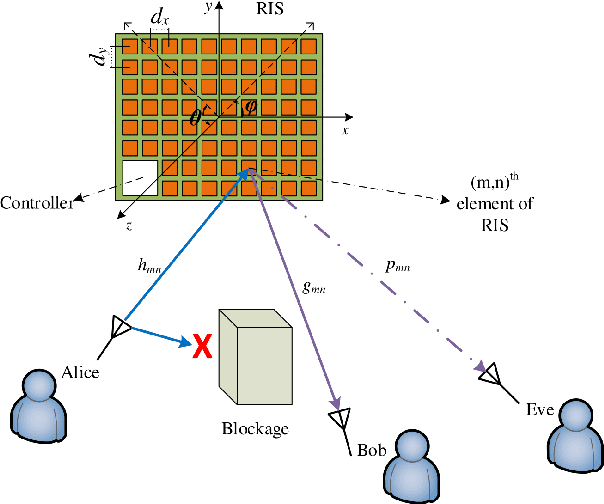
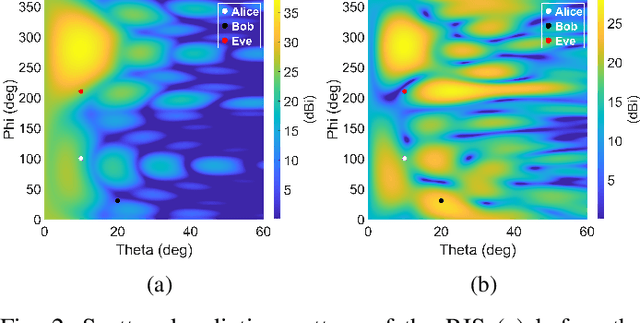
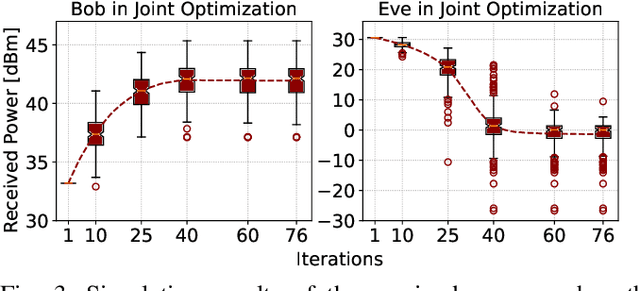
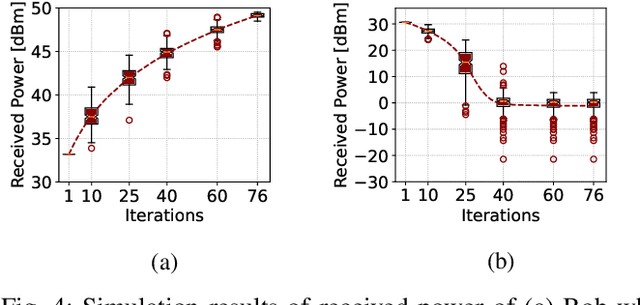
Abstract:There have been recently many studies demonstrating that the performance of wireless communication systems can be significantly improved by a reconfigurable intelligent surface (RIS), which is an attractive technology due to its low power requirement and low complexity. This paper presents a measurement-based characterization of RISs for providing physical layer security, where the transmitter (Alice), the intended user (Bob), and the eavesdropper (Eve) are deployed in an indoor environment. Each user is equipped with a software-defined radio connected to a horn antenna. The phase shifts of reflecting elements are software controlled to collaboratively determine the amount of received signal power at the locations of Bob and Eve in such a way that the secrecy capacity is aimed to be maximized. An iterative method is utilized to configure a Greenerwave RIS prototype consisting of 76 passive reflecting elements. Computer simulation and measurement results demonstrate that an RIS can be an effective tool to significantly increase the secrecy capacity between Bob and Eve.
An Adaptive Multi-Agent Physical Layer Security Framework for Cognitive Cyber-Physical Systems
Jan 07, 2021


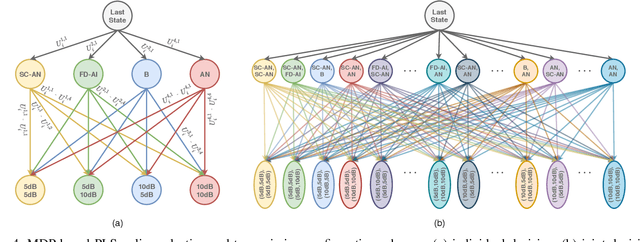
Abstract:Being capable of sensing and behavioral adaptation in line with their changing environments, cognitive cyber-physical systems (CCPSs) are the new form of applications in future wireless networks. With the advancement of the machine learning algorithms, the transmission scheme providing the best performance can be utilized to sustain a reliable network of CCPS agents equipped with self-decision mechanisms, where the interactions between each agent are modeled in terms of service quality, security, and cost dimensions. In this work, first, we provide network utility as a reliability metric, which is a weighted sum of the individual utility values of the CCPS agents. The individual utilities are calculated by mixing the quality of service (QoS), security, and cost dimensions with the proportions determined by the individualized user requirements. By changing the proportions, the CCPS network can be tuned for different applications of next-generation wireless networks. Then, we propose a secure transmission policy selection (STPS) mechanism that maximizes the network utility by using the Markov-decision process (MDP). In STPS, the CCPS network jointly selects the best performing physical layer security policy and the parameters of the selected secure transmission policy to adapt to the changing environmental effects. The proposed STPS is realized by reinforcement learning (RL), considering its real-time decision mechanism where agents can decide automatically the best utility providing policy in an altering environment.
 Add to Chrome
Add to Chrome Add to Firefox
Add to Firefox Add to Edge
Add to Edge